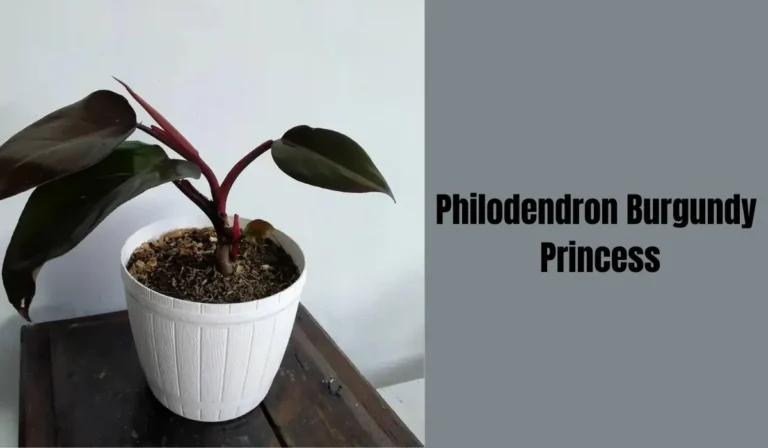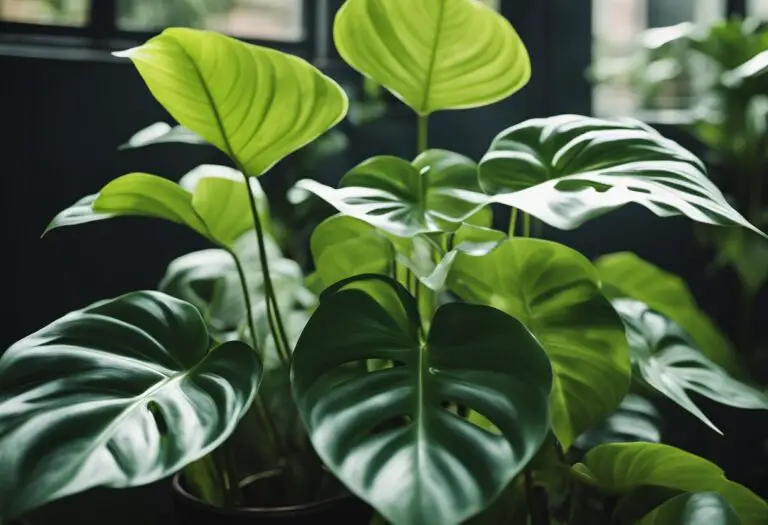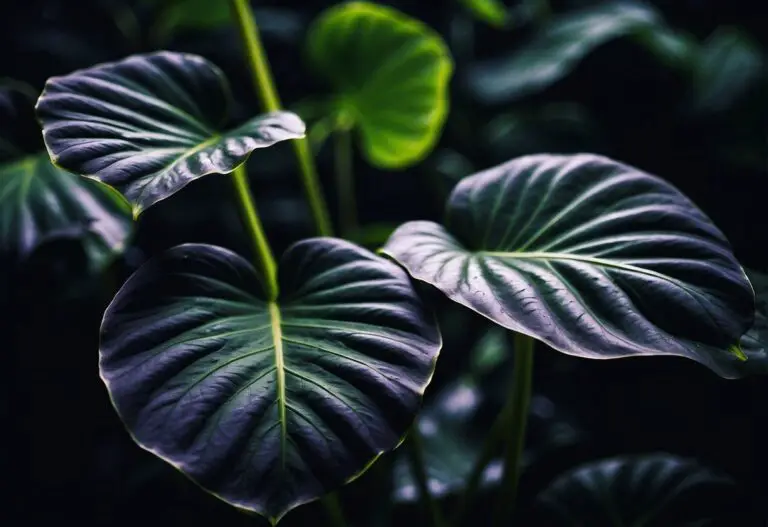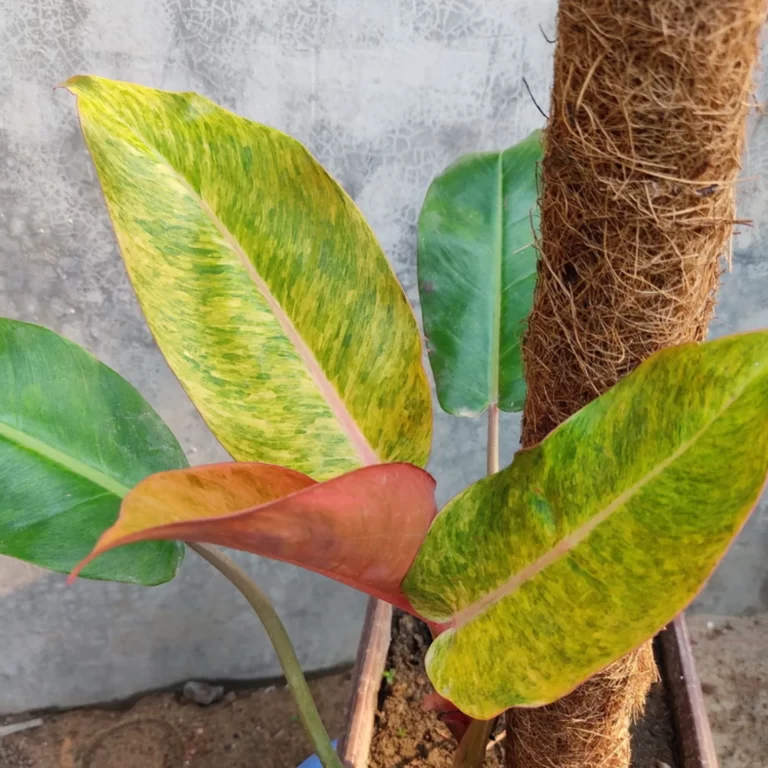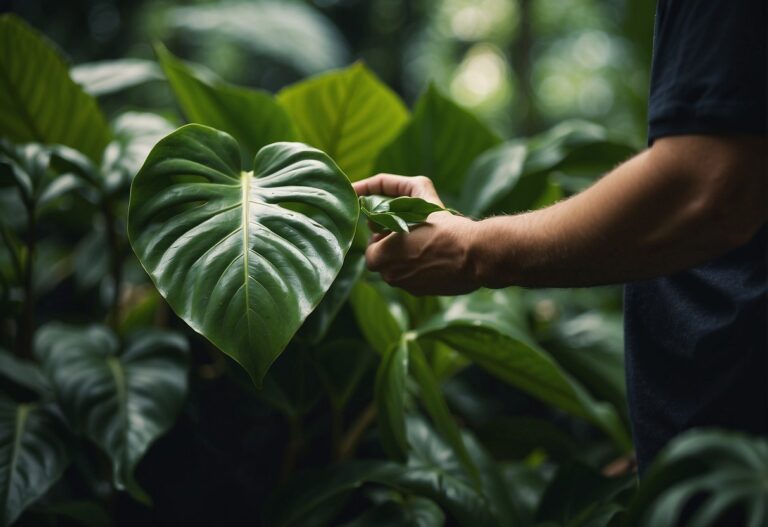Alocasia Velvet Elvis: A Guide to Care and Maintenance
Alocasia Velvet Elvis is a popular houseplant known for its striking deep green velvety leaves and distinct white veins. This plant is a member of the Araceae family and is native to Southeast Asia. It is a tropical plant and requires warm temperatures, high humidity, and bright indirect light to thrive.

Discovering Alocasia Velvet Elvis can be a rewarding experience for plant enthusiasts. With its unique and stunning foliage, it is a standout addition to any indoor garden. Cultivating and caring for this plant requires some knowledge and effort, but it is well worth it for the beauty it brings to any space.
Key Takeaways
- Alocasia Velvet Elvis is a tropical houseplant known for its deep green velvety leaves and striking white veins.
- This plant requires warm temperatures, high humidity, and bright indirect light to thrive.
- Cultivating and caring for Alocasia Velvet Elvis requires some knowledge and effort, but it is a rewarding addition to any indoor garden.
Discovering Alocasia Velvet Elvis

Origin and Background
Alocasia Velvet Elvis, also known as Alocasia micholitziana, is a tropical plant that originated from the Philippines. It belongs to the Araceae family and is closely related to other popular houseplants such as the elephant ear and the caladium.
It was first discovered in the early 1900s and has since gained popularity among plant enthusiasts due to its unique features.
Distinctive Features
One of the most distinctive features of Alocasia Velvet Elvis is its velvety green leaves with bold white venation. The leaves are arrow-shaped and can grow up to 12 inches long and 8 inches wide.
The plant can grow up to 2-2.5 feet tall and wide at maturity. It prefers bright, indirect light and well-draining soil. Like other Alocasia plants, it is toxic to pets and humans if ingested.
Alocasia Velvet Elvis is a low-maintenance plant that can thrive both indoors and outdoors in warm climates. It is a great addition to any collection due to its unique and striking appearance. With proper care, this plant can live for several years and continue to produce new growth.
Cultivation Tips

Ideal Soil Composition
When it comes to cultivating Alocasia Velvet Elvis, it is important to provide it with the right soil composition. Alocasia Velvet Elvis prefers rich, well-draining soil. It is recommended to use a potting mix that contains perlite, peat moss, or vermiculite to provide good drainage.
Make sure the pot has drainage holes to keep the soil consistently moist but not overly wet. Alocasia Velvet Elvis does not appreciate standing water, as this causes rotting of the roots.
Watering Requirements
Watering is an important aspect of Alocasia Velvet Elvis cultivation. It is recommended to water the plant whenever the top 0.5 inches (1 cm) of soil is dry.
Overwatering can lead to root rot and other problems, so it is important to avoid this. Also, misting the leaves regularly can help to raise humidity levels, which is beneficial for the plant.
Light and Temperature
Alocasia Velvet Elvis prefers bright, indirect sunlight. It is recommended to place the plant near a north or east-facing window, where it can receive the morning light without being exposed to direct sunlight.
The ideal temperature range for Alocasia Velvet Elvis is between 65°F and 85°F (18°C – 29°C). Keep the plant away from cold drafts or hot radiators, as this can damage the leaves.
Remember to keep these cultivation tips in mind to ensure the healthy growth of your Alocasia Velvet Elvis.
Propagation Methods
Alocasia Velvet Elvis is a stunning plant that can add a touch of elegance to any room. If you’re interested in propagating this beautiful plant, there are a few methods you can try.
One of the most popular propagation methods for Alocasia Velvet Elvis is division. This involves separating the plant into smaller sections, each with its own roots and leaves. To do this, gently remove the plant from its pot and separate the root ball into smaller sections. Be sure to use a sharp, clean knife or scissors to avoid damaging the roots.
Another propagation method is through rhizome cuttings, which involves cutting a section of the plant’s rhizome and planting it in soil. This method requires a bit more patience and care, as the rhizome needs time to develop new roots and shoots. However, it can be a great way to propagate Alocasia Velvet Elvis if you’re looking to expand your collection.
Finally, you can also propagate Alocasia Velvet Elvis through offsets. These are small plantlets that grow off the parent plant’s stem, and can be removed and planted on their own. This method is relatively easy and can be done by gently removing the offset from the parent plant and planting it in soil.
No matter which propagation method you choose, be sure to provide your Alocasia Velvet Elvis with plenty of light, humidity, and water. With a little patience and care, you can enjoy the beauty of this stunning plant for years to come.
Common Issues and Solutions
Pest Problems
Alocasia Velvet Elvis is susceptible to pest infestations, just like any other houseplant. Common pests that can attack this plant include spider mites, mealybugs, and scale insects.
To prevent pest problems, it is important to keep the plant clean and free of dust. If pests are detected, isolate the plant and treat it with an insecticidal soap or neem oil. Repeat the treatment after a week or two to ensure that all the pests have been eliminated.
Fungal Diseases
Fungal diseases are a common problem with Alocasia Velvet Elvis, especially if the plant is overwatered or exposed to high humidity. The most common fungal diseases that affect this plant are root rot, leaf spot, and powdery mildew.
To prevent fungal diseases, ensure that the soil is well-draining and that the plant is not overwatered. If fungal diseases are detected, isolate the plant and treat it with a fungicide. Repeat the treatment as necessary until the disease is eradicated.
Leaf Discoloration
Leaf discoloration is a common problem with Alocasia Velvet Elvis, and it can be caused by a variety of factors, including overwatering, underwatering, low humidity, and nutrient deficiencies.
To prevent leaf discoloration, ensure that the plant is watered properly and that the humidity levels are adequate. If leaf discoloration is detected, identify the cause and take appropriate measures to correct the problem. For example, if the problem is caused by nutrient deficiencies, fertilize the plant with a balanced fertilizer.
Design and Styling
Alocasia Velvet Elvis is a unique and striking plant that can add a touch of regal charm to any room. This plant is not your typical houseplant, with its deep green velvety leaves and distinct white veins. When it comes to styling the Alocasia Velvet Elvis, there are a few things to consider.
Potting Ideas
When it comes to potting the Alocasia Velvet Elvis, there are many options to choose from. This plant looks great in a variety of pots, from classic terracotta to modern ceramic pots.
Alocasia Velvet Elvis can also be planted in hanging baskets to create a dramatic effect. When choosing a pot, it is important to consider the size of the plant and the size of the pot. Alocasia Velvet Elvis prefers well-draining soil, so make sure the pot has drainage holes.
Companion Plants
Alocasia Velvet Elvis looks great on its own, but it can also be paired with other plants to create a stunning display. Some great companion plants for Alocasia Velvet Elvis include ferns, calathea, and snake plants.
These plants have similar care requirements and can create a lush and tropical feel in any space. When pairing plants, it is important to consider the lighting requirements of each plant and make sure they are compatible.
Overall, Alocasia Velvet Elvis is a stunning plant that can add a touch of elegance to any space. With the right pot and companion plants, this plant can create a lush and tropical feel in any room.
Frequently Asked Questions
How do I properly care for an Alocasia Velvet Elvis plant?
To properly care for an Alocasia Velvet Elvis plant, it is important to provide it with bright, indirect light and well-draining soil. Water the plant regularly, but be careful not to overwater it as this can lead to root rot. Additionally, the plant prefers high humidity levels and temperatures between 60°F (16°C) and 80°F (27°C).
What are the differences between Alocasia Velvet Elvis and Alocasia Micholitziana?
Alocasia Velvet Elvis and Alocasia Micholitziana are similar in appearance but have some differences. Velvet Elvis has velvety green leaves with bright white veins, while Micholitziana has green leaves with white veins that are less pronounced. Additionally, Velvet Elvis tends to have a more compact growth habit than Micholitziana.
Can you compare Alocasia Velvet Elvis with Alocasia Frydek?
Alocasia Velvet Elvis and Alocasia Frydek are both members of the Alocasia family of plants but have some differences. Velvet Elvis has velvety green leaves with bright white veins, while Frydek has large, arrow-shaped leaves with thick white veins. Additionally, Velvet Elvis tends to have a more compact growth habit than Frydek.
What is the typical height of an Alocasia Velvet Elvis?
The typical height of an Alocasia Velvet Elvis plant is around 2 to 3 feet. However, the plant can grow taller under optimal conditions.
Is the Alocasia Black Velvet considered a rare plant?
The Alocasia Black Velvet is considered a rare plant due to its unique and striking appearance. It has dark green, velvety leaves that almost appear black in color, making it a highly sought-after plant among collectors.
Are Alocasia Black Velvet plants toxic to pets?
Yes, Alocasia Black Velvet plants are toxic to pets such as cats and dogs. The plant contains calcium oxalate crystals that can cause irritation and swelling in the mouth and throat if ingested. It is important to keep the plant out of reach of pets and children.

